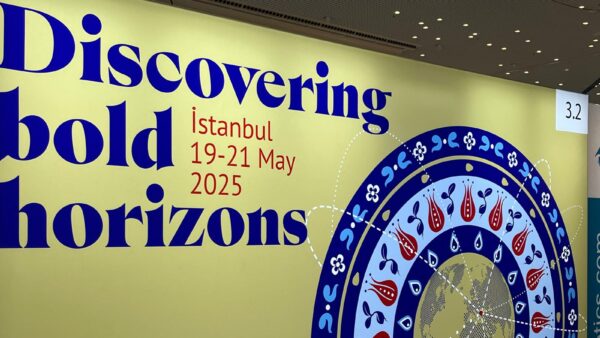_x000D_
University of Saskatchewan (U of S) researchers have released a draft lentil genome assembly that will help develop new understanding and commercial applications of this ancient crop.
_x000D_
_x000D_
_x000D_
_x000D_
_x000D_
“The lentil genome assembly will provide important information to help us better understand this crop,” said Kirstin Bett, U of S professor in the Department of Plant Sciences and project lead of the international lentil sequencing effort. “More importantly, it will lead to development of genomic tools that will help improve breeding practices and accelerate varietal development.”_x000D_
_x000D_
The development of genomic tools will allow breeders to track multiple, complex traits during their cross-breeding, which will help them develop high quality and high-yielding lentils in a shorter period of time. Improved speed, precision and breadth offered by these genomic tools have proven to be complementary to classical field and phenotype-based breeding practice._x000D_
_x000D_
This international sequencing effort is unique as the research is farmer-driven and industry-supported. Saskatchewan Pulse Growers (SPG) has been a strong supporter of pulse crop research and development at the U of S. SPG first partnered with the Saskatchewan Ministry of Agriculture in 2011 to provide approximately $1-million for initial lentil genomic research. In 2013, SPG provided more than $1.4-million to kick-start this sequencing initiative._x000D_
_x000D_
“Many international partners came on board once SPG made the investment,” said Bett. “The sequencing work quickly gained momentum and that’s why we were able to complete the sequencing in less than three years.”_x000D_
_x000D_
“The sequencing of the lentil genome will provide breeders with tools to bring improved lentil varieties to growers faster,” said Carl Potts, executive director with Saskatchewan Pulse Growers. “The University of Saskatchewan is the world leader in lentil genetic development. This investment will help ensure Canadian growers remain globally competitive and that lentils can continue to be an economically strong performing crop for Canadian farmers.”_x000D_
_x000D_
“Our government is proud to support research that benefits both producers and our industry as a whole,” Saskatchewan Minister of Agriculture Lyle Stewart said. “Lentils are vitally important to Saskatchewan’s growing agriculture industry. We are world leaders in lentil production and exports. Innovative research leading to high-yielding, high-quality varieties will help ensure we remain leaders.”_x000D_
_x000D_
The reference lentil genome is based on CDC Redberry, a well-known small red lentil variety developed by Bert Vandenberg, U of S plant sciences professor and lentil breeder._x000D_
_x000D_
“With the lentil genome release, we can confidently say that this crop has finally entered the 21st century of plant breeding,” said Bett. “We can now develop molecular markers that will help breeders to incorporate desirable traits in their crosses in a much more logical way.”_x000D_
_x000D_
Canada has been the world’s largest producer and exporter of lentils since 2008. It is a very important field crop for the Canadian economy and plays a significant role in supporting environmentally sustainable agriculture. The lentil genome release will help increase the competitiveness of the Canadian lentil industry and further maintain Canada’s position as the leading lentil breeder, producer and exporter in the world._x000D_
_x000D_
The sequencing effort includes researchers at University of California-Davis, National Research Council Canada, United States Department of Agriculture, Washington State University, International Center for Agricultural Research in Dry Areas (ICARDA), Victoria State Government, African Orphan Crop Consortium, University of Western Australia and the Institute of Experimental Botany in the Czech Republic. The group presented its findings at the Plant and Animal Genome Conference on Jan. 9, 2016 in San Diego, California._x000D_
_x000D_
_x000D_
“The lentil genome assembly will provide important information to help us better understand this crop,” said Kirstin Bett, U of S professor in the Department of Plant Sciences and project lead of the international lentil sequencing effort. “More importantly, it will lead to development of genomic tools that will help improve breeding practices and accelerate varietal development.”_x000D_
_x000D_
The development of genomic tools will allow breeders to track multiple, complex traits during their cross-breeding, which will help them develop high quality and high-yielding lentils in a shorter period of time. Improved speed, precision and breadth offered by these genomic tools have proven to be complementary to classical field and phenotype-based breeding practice._x000D_
_x000D_
This international sequencing effort is unique as the research is farmer-driven and industry-supported. Saskatchewan Pulse Growers (SPG) has been a strong supporter of pulse crop research and development at the U of S. SPG first partnered with the Saskatchewan Ministry of Agriculture in 2011 to provide approximately $1-million for initial lentil genomic research. In 2013, SPG provided more than $1.4-million to kick-start this sequencing initiative._x000D_
_x000D_
“Many international partners came on board once SPG made the investment,” said Bett. “The sequencing work quickly gained momentum and that’s why we were able to complete the sequencing in less than three years.”_x000D_
_x000D_
“The sequencing of the lentil genome will provide breeders with tools to bring improved lentil varieties to growers faster,” said Carl Potts, executive director with Saskatchewan Pulse Growers. “The University of Saskatchewan is the world leader in lentil genetic development. This investment will help ensure Canadian growers remain globally competitive and that lentils can continue to be an economically strong performing crop for Canadian farmers.”_x000D_
_x000D_
“Our government is proud to support research that benefits both producers and our industry as a whole,” Saskatchewan Minister of Agriculture Lyle Stewart said. “Lentils are vitally important to Saskatchewan’s growing agriculture industry. We are world leaders in lentil production and exports. Innovative research leading to high-yielding, high-quality varieties will help ensure we remain leaders.”_x000D_
_x000D_
The reference lentil genome is based on CDC Redberry, a well-known small red lentil variety developed by Bert Vandenberg, U of S plant sciences professor and lentil breeder._x000D_
_x000D_
“With the lentil genome release, we can confidently say that this crop has finally entered the 21st century of plant breeding,” said Bett. “We can now develop molecular markers that will help breeders to incorporate desirable traits in their crosses in a much more logical way.”_x000D_
_x000D_
Canada has been the world’s largest producer and exporter of lentils since 2008. It is a very important field crop for the Canadian economy and plays a significant role in supporting environmentally sustainable agriculture. The lentil genome release will help increase the competitiveness of the Canadian lentil industry and further maintain Canada’s position as the leading lentil breeder, producer and exporter in the world._x000D_
_x000D_
The sequencing effort includes researchers at University of California-Davis, National Research Council Canada, United States Department of Agriculture, Washington State University, International Center for Agricultural Research in Dry Areas (ICARDA), Victoria State Government, African Orphan Crop Consortium, University of Western Australia and the Institute of Experimental Botany in the Czech Republic. The group presented its findings at the Plant and Animal Genome Conference on Jan. 9, 2016 in San Diego, California._x000D_
_x000D_











